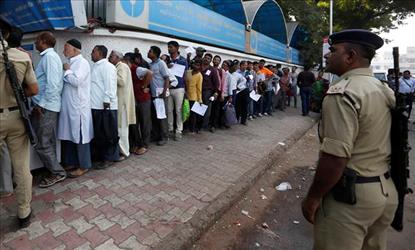
In an unscheduled televised appearance on November 08, 2016, India’s Prime Minister Narendra Modi announced that 500 and 1,000 rupee notes (which accounted for 86% of all currency) would be removed from circulation overnight.The purpose of this demonetization policy was to promote fiscal transparency, modernise a complex, cash-centric economy and empower social inclusion.But as one would expect, the impact of such a radical, unexpected approach was immediate and profound. Cash accounted for 90% of all transactions, so the early days of demonetized India were defined by queues at ATMs and an economically damaging liquidity crisis.With liquidity stabilising and a more certain picture emerging, however, it is clear that identity, mobile and payments are increasingly converging to meet the challenges of the Indian digital economy.Aadhaar – the enabler of demonetizationOne of the fundamental pillars supporting demonetization in India is the ‘Aadhaar Program’.Aadhaar is a twelve-digit unique identification number, which contains biometric and demographic data. Uptake has been extraordinary, with 99% of Indians aged 18 and above having enrolled as of January 2017, making it by far the world’s most advanced biometric identification scheme. The importance of Aadhaar in India’s brave new digital economy cannot be underestimated. This is because it can be used as the sole means of identity verification when accessing financial services, removing the key barrier for India’s unbanked population. Already, over 270 million bank accounts have been

opened using Aadhaar.Leaders of the mobile world This wider and simplified access to financial services is coupled with an increasingly advanced mobile infrastructure. India boasts the highest global mobile per capita rate, and it will lead the world in smartphone adoption between 2016-20. Mobile data usage will also increase fivefold by 2021. Consequently, the Indian mobile wallet market is set for 148% growth between 2017-22, accounting for $4.4 billion in transactions. Indeed, we are already seeing considerable innovation across mobile payments and the emergence of a sophisticated mobile payments infrastructure. For example, the National Payments Corporation of India (NPCI) - an umbrella institution for all retail payment systems designed to facilitate affordable payment mechanisms in the country - has developed its Unified Payment Interface (UPI) platform. UPI is a payments application that enables users to transfer and transact using just a mobile number, dedicated UPI address or Aadhaar ID. We also expect several HCE-based mobile wallet solutions to emerge as a quick and cost-effective means of delivering mobile payment services. In the absence of hardware security, however, the security of cardholder data is integral to ensuring consumer confidence and driving adoption. Compliance with industry standards such as PCI DSS, therefore, is key. In parallel, the strategic and commercial importance of the Indian market means the ‘OEM Pay’ platforms will undoubtedly have a role to play. Samsung Pay has already launched, and we can surely expect similar announcements from the other technology giants. Meeting terminal demandThe demonetization process, in parallel with the ongoing EMV®* migration, means that the merchant community is embarking on the huge task of upgrading the acceptance infrastructure nationwide.For India’s terminal manufacturers, this expanding market is an unprecedented opportunity. But they must move quickly. Tax exemptions for domestic manufacturers are incentivising entry into this increasingly lucrative space, and governmental regulation to relax certification requirements for imported POS terminals will foster further competition from overseas.Accelerating time to market is key to meeting demand. Manufacturers and developers may therefore want to work with local partners to streamline the certification process for their solutions. Getting to the next levelLet us be clear. Demonetization in India is a policy of extraordinary scope and ambition, combining advanced solutions across identity, mobile and payments to revolutionize commerce and financial services across the nation.It is imperative, therefore, that local players upgrade their knowledge and work with the right partners to assess and analyse the changing landscape to enable them to make the right decisions swiftly, now and in the future.FIME has over 20 years’ experience in bringing innovative technologies to market quickly and efficiently. It has developed a comprehensive offer of consulting services, technical training, technology design, test tools and certification testing. Its experts support projects from start to finish, resolving the technical challenges posed by implementing a complete portfolio of specifications, standards and multi-brand industry requirements. *EMV is a registered trademark in the U.S. and other countries, and is an unregistered trademark in other countries, owned by EMVCo.
About FIMEFIME offers comprehensive consulting services, technical training, technology design, test tools and certification testing across the financial services, telecom, transit and identity sectors. Its experts support projects from start to finish, resolving the technical challenges its customers face when implementing a complete portfolio of specifications, standards and multi-brand industry requirements. FIME speaks the language of its customers and uses its 20+ years of experience to ensure that card and mobile transactions services are implemented efficiently and successfully. It supports a range of technologies including contact, contactless, EMV chip, near field communication (NFC), host card emulation (HCE), tokenization, secure element (SE), machine to machine (M2M), internet of things (IoT) and trusted execution environment (TEE). Partnering with the international and national payment schemes, and industry bodies, FIME ensures its multi-brand offering is always aligned with the latest market requirements.




 click and follow Indiaherald WhatsApp channel
click and follow Indiaherald WhatsApp channel